The Journey: Insights from Frozen Tools Usage Charts – Part 1
Ben Gehrels
2022-11-19
Welcome back to The Journey, where we track the development of prospects as they excel in junior, make the NHL, and push towards stardom.
If you often root around in the "Advanced Stats" tab on Frozen Tools player profiles, you will doubtless be familiar with the Player Usage charts. Once you learn how to read them, these charts can communicate several useful insights at a glance. Back in June, Dobber wrote a helpful explanation for how to read the charts and interpret some of the other advanced stats listed in the profiles (ie. OZ%, PDO, IPP, xGF).
Here is a quick summary:
- Bigger bubble = More playing time
- Dark blue bubble = Drives more shot attempts relative to his teammates
- Bubble at the top = Plays against toughest competition
For fantasy purposes, we love to see players rocking large, dark blue bubbles as far to the right as possible. That means they are seeing lots of ice, starting most of their shifts in the offensive zone, and generating more shots for than against when they are on the ice. If that bubble is near the top of the chart, they are dominating regardless of who they are up against—which is impressive in real life but less important for fantasy. Sheltered, offensive specialists can be just as valuable as all-situations minute munchers.
The Usage Charts did not reflect 2022-23 games until recently when the data set finally grew large enough. As with all stat-based insights, take everything here with a grain of salt because it is still early. But they can give us a useful glimpse into how a given player is being deployed by their team and how well they are performing in that role. As the season progresses, this visual data will become more and more trustworthy.
Starting with Coyotes, Juuso Valimaki jumps off the screen with his large, dark blue bubble in the top left. This is a very weak team—Arizona is duking it out with Chicago at the bottom of the standings—but relative to his teammates Valimaki seems to have rejuvenated his career after finally flaming out in Calgary.
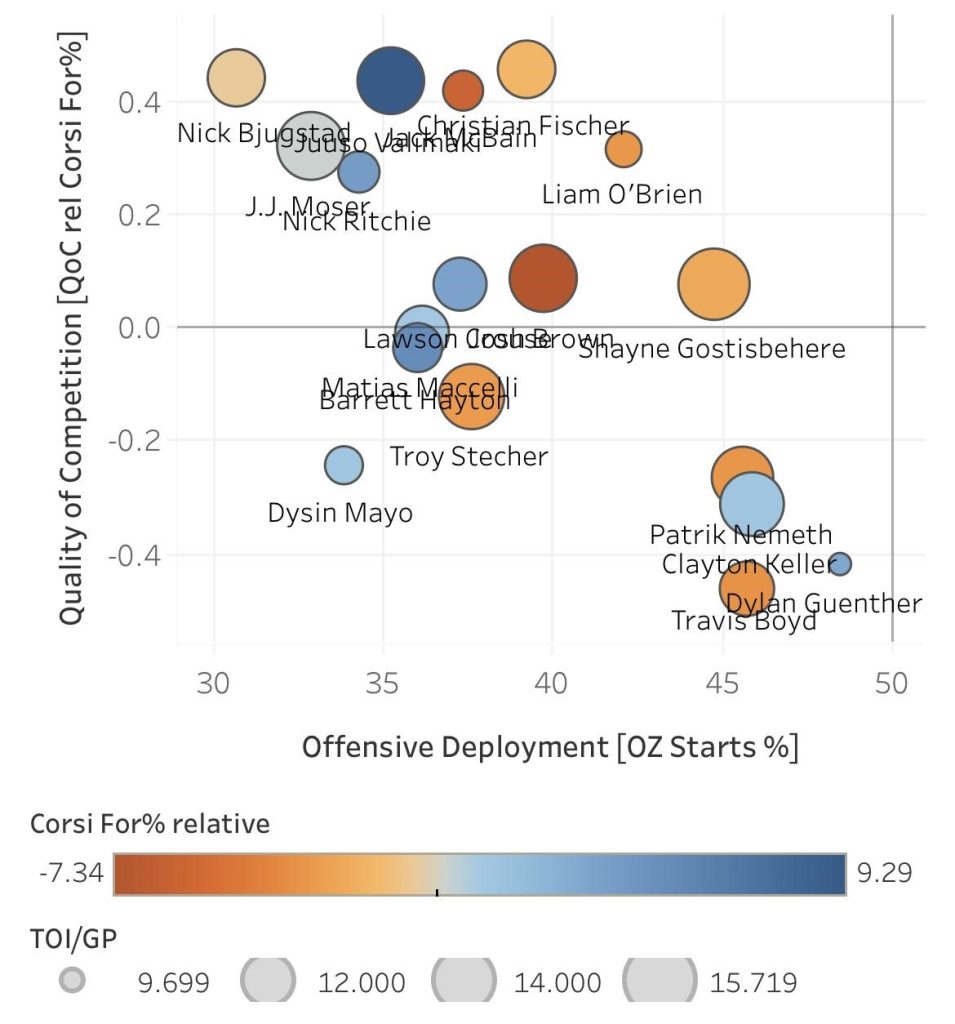
Valimaki is finally seeing time on the power play—an opportunity he was almost never given with the Flames even though he was a talented PP specialist at lower levels. His 30-point pace is still difficult to roster for fantasy purposes but 80% of those points came on the PP. Keep in mind that this is a player who has not even played 100 NHL games yet even though it's his fourth year in the league. Give him another season to hit his Breakout Threshold before firming up your assessment.
The following statline is becoming increasingly familiar: A PP goal scored by Dylan Guenther, assisted by Matias Maccelli and Juuso Valimaki, usually in that order. As I've written elsewhere, snap up your Coyotes assets now before they draft one of the 2023 Big Four this June. That means guys like Guenther, Maccelli, Clayton Keller, Logan Cooley, JJ Moser—even Valimaki and the beleaguered Barrett Hayton. Their value will spike with the almost inevitable addition of a true franchise player.
Speaking of Hayton, his value is absolutely in the toilet right now but he has the darkest blue bubble on the team after Valimaki. Yes, he has been sheltered, and three points in 16 games is not going to cut it. But he is 51% at the dot, seeing some PP time, has been tremendously unlucky (851 PDO), and like Valimaki is still about a season and a half from reaching his BT. He was the fifth overall pick in 2018, so poolies are by and large sick of waiting for him to do something meaningful.
I still see a great buy-low opportunity.
—
The Sabres these days have some of the most intriguing prospects and young players in the league. So how are they doing?
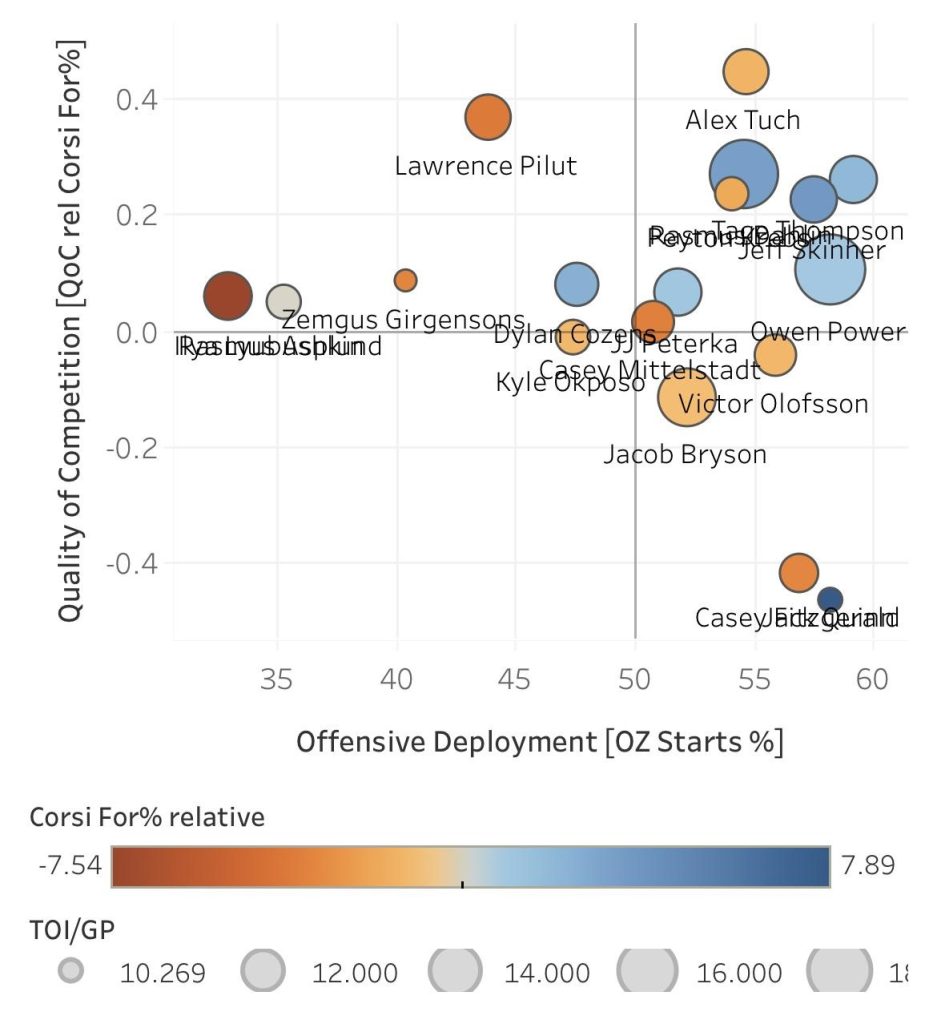
Jack Quinn is the extremely sheltered dark blue bubble in the bottom right. He is getting very limited and preferential deployment so far and doing great with it. He continues to be a valuable blue-chip prospect
In the upper right are the two blue line pillars of this team for the next decade plus: Rasmus Dahlin and Owen Power. Power is doing well playing tons of minutes in a somewhat sheltered role; he is currently on a 39-point pace, the exact total I predicted for him based on Aaron Ekblad's Calder-winning season in 2014-15.
JJ Peterka and Dylan Cozens—mid-sized, light blue bubbles in the middle of the pack—are also proving in the early going that they can be core pieces of this club moving forward.
More concerning are Peyton Krebs' early results: he is the tiny orange bubble embedded in Dahlin's larger blue one. He has been lining up alongside Casey Mittelstadt and Victor Olofsson, solid linemates, but his low IPP (43%) shows he is often not involved in goals scored when he is on the ice.
It's not clear why Krebs has struggled so hard so far this year to get things going, but like Hayton he makes a great buy low right now. He dominated at every level before this: 171 points in 126 WHL games, 20 in 20 AHL games, and 22 in 19 for Team Canada at international tournaments. He is likely one of the cheaper ways to grab a slice of that Buffalo pie and still has over 100 games until he hits his BT and we see his true upside.
—
Moving on to the Carolina chart, the first thing that jumps out is the head-scratching deployment of Teuvo Teravainen and Seth Jarvis, as they are struggling in a key defensive role usually taken on by two-way middle sixers. Paul Stastny is clearly not the player he once was; he would have traditionally excelled taking defensive zone draws over on the left side where Turbo and Jarvis are living but he is instead struggling in a sheltered, offensively advantageous role this year.
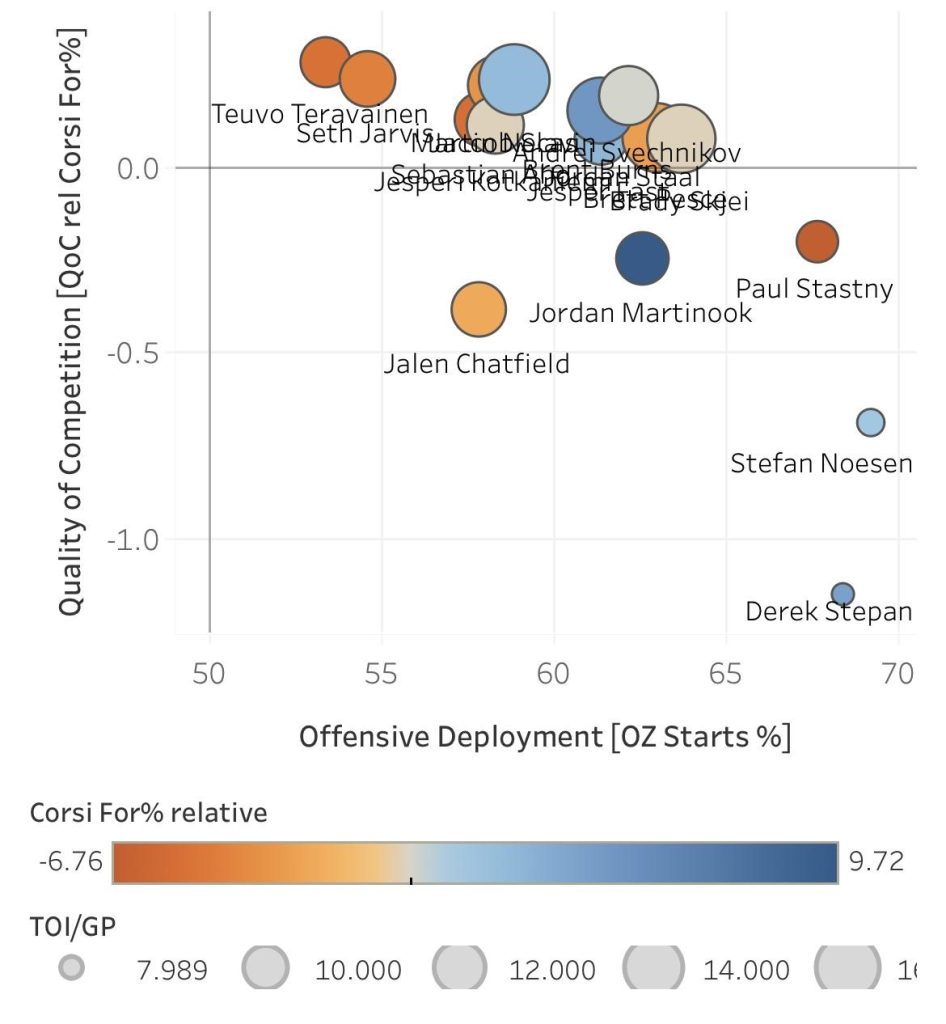
I expect Jarvis in particular to see more Offensive Zone starts as the year continues. He played most recently with Andrei Svechnikov and Jesperi Kotkaniemi, and that trio absolutely dominated to the tune of 19 shots for versus only two against. Jarvis is also featuring prominently on the Canes' top PP unit right now, so even though his 30-point pace is disappointing, he is still shooting, hitting, and getting tons of opportunity. He should be able to comfortably hit 50 points this year when all is said and done.
—
Over in the limping trainwreck that is the Blue Jackets right now, you can immediately see why it is so devastating for them to lose Zach Werenski for the rest of the year. He, Boone Jenner, and Johnny Gaudreau have all been major bright spots for this team even though the widespread perception in fantasy seems to be that Gaudreau has been a disappointment. Sure, he is not pacing for 115 points this year but 70+ is still valuable, and also not that out of line for him, as he has scored at a 65-70 pace over four previous seasons. I imagine that will be his floor for 2022-23 and he will jump beyond point-per-game territory as key players like Patrik Laine return from injury and the team continues to gel.
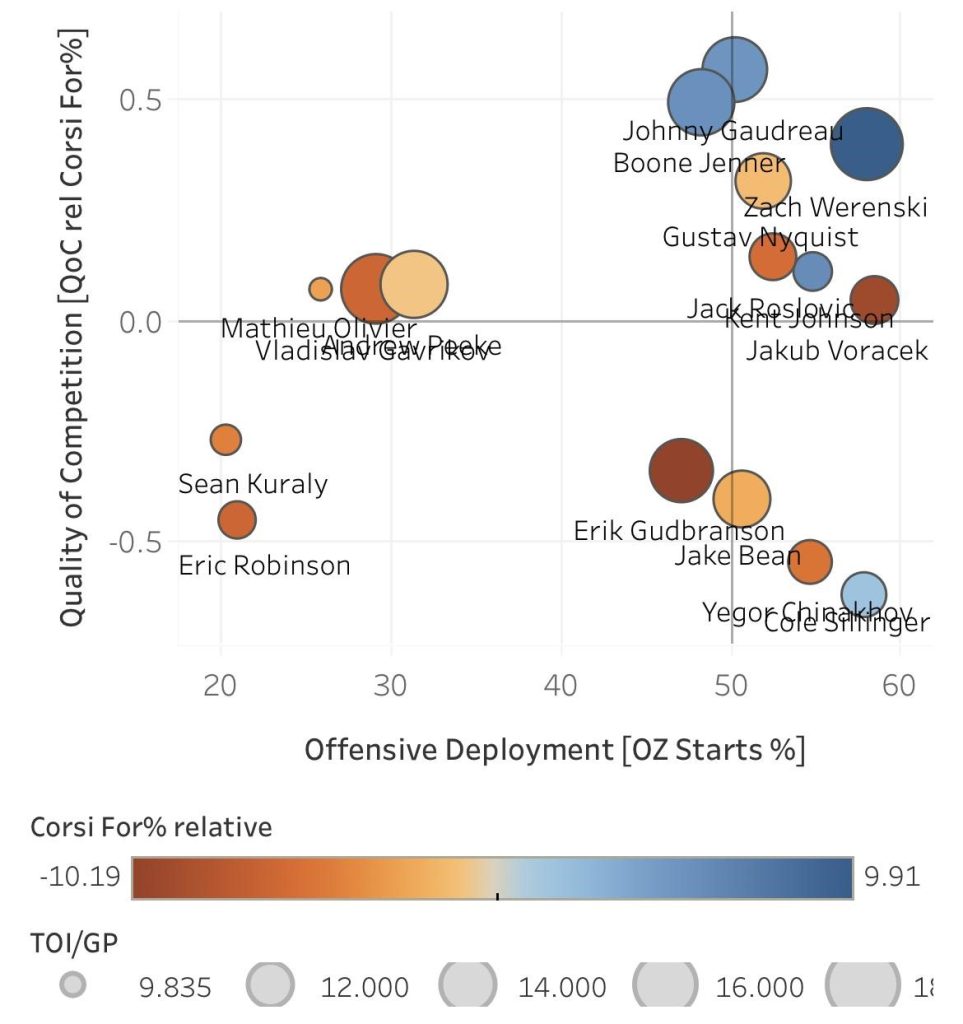
Kent Johnson continues to show that he has number one center potential. He is pacing for 50 points while playing alongside struggling linemates Jack Roslovic, Jakub Voracek, and Liam Foudy. He is right up there with the team leaders in terms of generating shot attempts, and his role should continue to grow as he gets more comfortable playing at the highest level.
Down at the bottom right, Cole Sillinger is another bright spot on this team. He continues to show excellent 2C potential but will have to show he can produce positive results against higher quality competition moving forward.
—
The Flames' chart is a bit of a mess, and they do not have too many notable prospects at the moment. There have been many disappointing players on this team so far in 2022-23, so expect some changes as stars like Huberdeau begin to rebound. Lots of interesting buy low opportunities here.
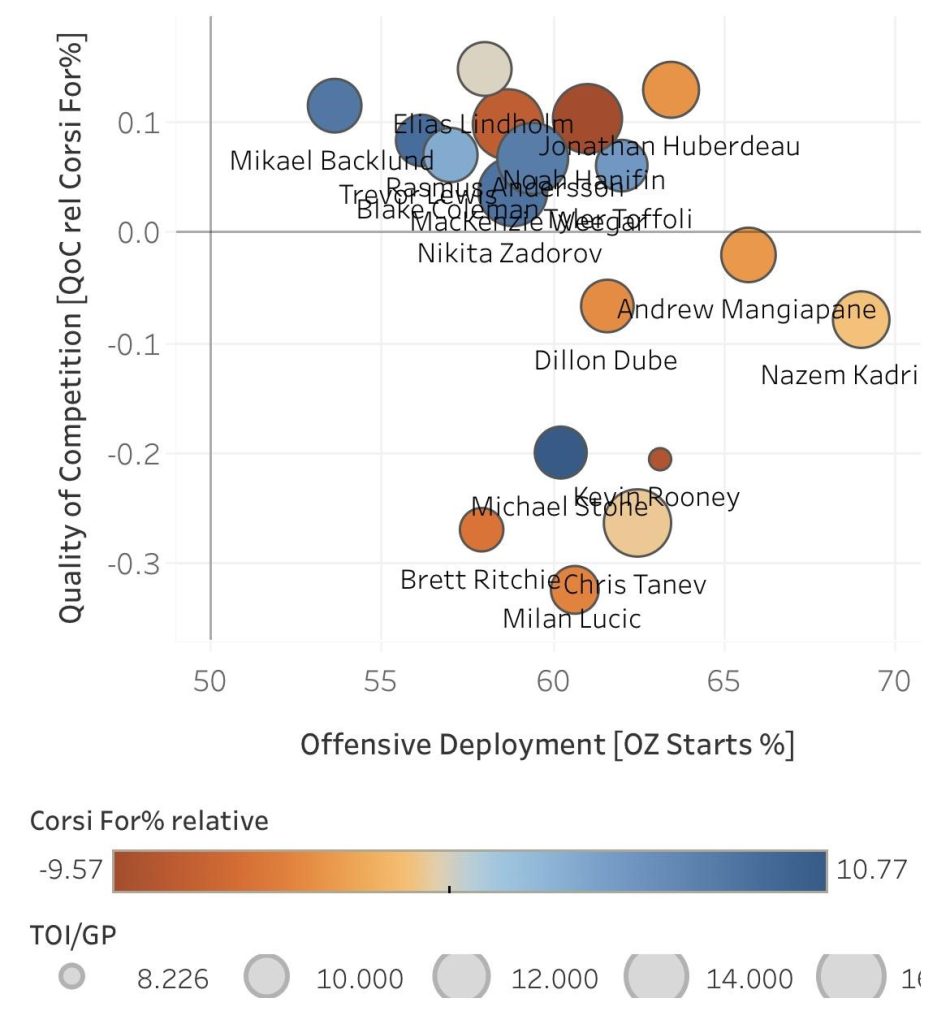
Two Calgary players I have been particularly disappointed with are Noah Hanifin and Dillon Dube. Hanifin, who seemed to finally break out last year just past his 400-game Breakout Threshold into 50-point territory, is the almost brown bubble right in the middle. His partner, Rasmus Andersson, is the other big orange bubble there. The pair is taking on big, hard minutes and struggling.
Dube seemed like a savvy add coming into 2022-23 because he was sitting exactly at 200 games and had shown fairly steady offensive progression over his previous four seasons—and even beyond when he scored 52 points in 50 AHL games. He had the inside track on a top six role but was flying under the radar because he had never exceeded 35 points in a season yet.
I expect him to rebound somewhat as the year continues but his four points in 16 games to date has made him all but unrosterable. He is not seeing time with the man advantage right now and is mired in a depth role with Blake Coleman and Brett Ritchie. Dube is definitely a sleeper who is still asleep for the moment.
—
Thanks for reading! Next week we will continue gleaning insights from the Player Usage charts, moving on alphabetically starting with Chicago. Not every team will be touched on—just teams who have interesting deployment for their prospects and young players. Follow me on Twitter @beegare for more prospect content and fantasy hockey analysis.

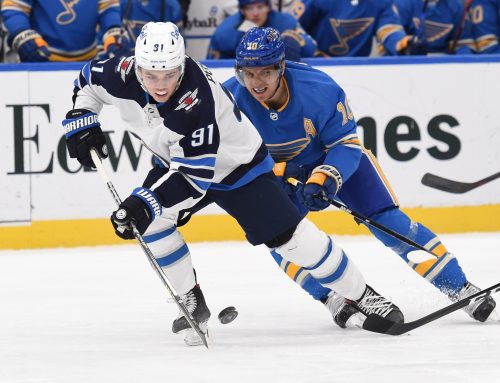

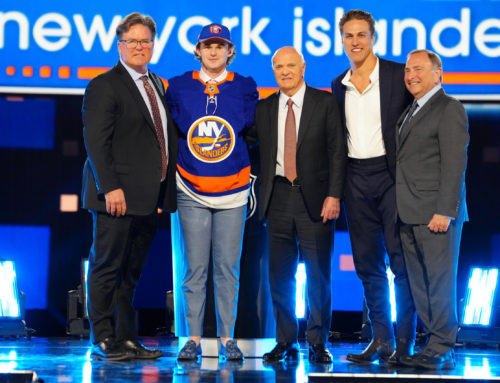
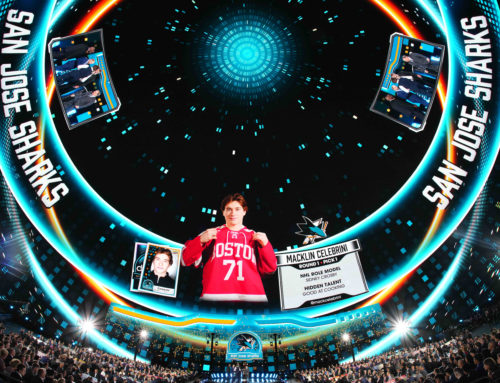
 BUF
BUF N.J
N.J PHI
PHI MIN
MIN VAN
VAN FLA
FLA TOR
TOR CGY
CGY CHI
CHI